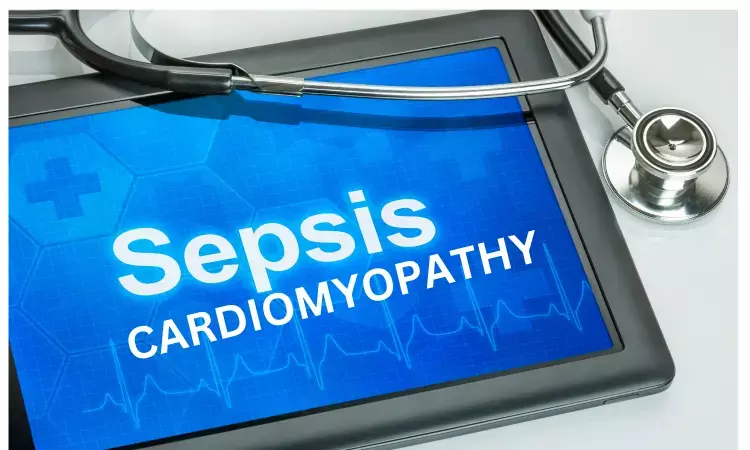- Home
- Medical news & Guidelines
- Anesthesiology
- Cardiology and CTVS
- Critical Care
- Dentistry
- Dermatology
- Diabetes and Endocrinology
- ENT
- Gastroenterology
- Medicine
- Nephrology
- Neurology
- Obstretics-Gynaecology
- Oncology
- Ophthalmology
- Orthopaedics
- Pediatrics-Neonatology
- Psychiatry
- Pulmonology
- Radiology
- Surgery
- Urology
- Laboratory Medicine
- Diet
- Nursing
- Paramedical
- Physiotherapy
- Health news
- Fact Check
- Bone Health Fact Check
- Brain Health Fact Check
- Cancer Related Fact Check
- Child Care Fact Check
- Dental and oral health fact check
- Diabetes and metabolic health fact check
- Diet and Nutrition Fact Check
- Eye and ENT Care Fact Check
- Fitness fact check
- Gut health fact check
- Heart health fact check
- Kidney health fact check
- Medical education fact check
- Men's health fact check
- Respiratory fact check
- Skin and hair care fact check
- Vaccine and Immunization fact check
- Women's health fact check
- AYUSH
- State News
- Andaman and Nicobar Islands
- Andhra Pradesh
- Arunachal Pradesh
- Assam
- Bihar
- Chandigarh
- Chattisgarh
- Dadra and Nagar Haveli
- Daman and Diu
- Delhi
- Goa
- Gujarat
- Haryana
- Himachal Pradesh
- Jammu & Kashmir
- Jharkhand
- Karnataka
- Kerala
- Ladakh
- Lakshadweep
- Madhya Pradesh
- Maharashtra
- Manipur
- Meghalaya
- Mizoram
- Nagaland
- Odisha
- Puducherry
- Punjab
- Rajasthan
- Sikkim
- Tamil Nadu
- Telangana
- Tripura
- Uttar Pradesh
- Uttrakhand
- West Bengal
- Medical Education
- Industry
Sepsis Induced Cardiomyopathy associated with significantly higher short-term mortality

Recent advances in diagnostic techniques have increased the sensitivity of detection of myocardial abnormalities but have posed challenges in linking those abnormalities to therapeutic strategies and relevant clinical outcomes. Sophisticated methodologies have elucidated various pathophysiological mechanisms in Sepsis Induced Cardiomyopathy but the extent to which these are adaptive responses is yet to be known.
The prevalence and its impact on mortality of sepsis-induced cardiomyopathy (SICM) remain controversial. A recent systematic review and meta-analysis, in Journal of Intensive Care Medicine investigated the prevalence and prognosis of SICM.
Dr Daisuke Hasegawa, MD, PhD and team reported that the meta-analysis found the prevalence of SICM was 20% higher in patients with sepsis, and the occurrence of SICM was associated with significantly higher short-term mortality.
Researchers searched MEDLINE, Cochrane Central Register of Controlled Trials, and Embase. Titles and abstracts were evaluated based on the following criteria: published in English, randomized controlled trials, cohort studies, or cross-sectional studies, ≥ 18 years with sepsis, reporting the prevalence and/or comparison of short-term mortality between those with and without SICM, defined as the new-onset reduction in left ventricular ejection fraction (LVEF) within 72 h on admission or from the diagnosis of sepsis. The random-effect model was used for all analyses.
The key findings of the study are
• Sixteen studies reported the prevalence of SICM and the pooled prevalence of SICM was 20% (95% confidence interval [CI], 16-25%; I2 = 89.9%, P < 0.01).
• Eleven studies reported short-term mortality and SICM was associated with significantly higher short-term mortality (The pooled odds ratio: 2.30, 95% CI, 1.43-3.69; I2 = 0%, P = 0.001).
The results of this study highlight the significant proportion of patients with sepsis who develop cardiomyopathy and the increased risk of mortality associated with this condition. Further research is needed to identify patients with an increased risk of sepsis-induced cardiomyopathy as well as optimal monitoring and management of these patients.
Dr Daisuke Hasegawa and team concluded that the prevalence of SICM was 20% in patients with sepsis, and the occurrence of SICM was associated with significantly higher short-term mortality.
Reference: Hasegawa D, Ishisaka Y, Maeda T, et al. Prevalence and Prognosis of Sepsis-Induced Cardiomyopathy: A Systematic Review and Meta-Analysis. Journal of Intensive Care Medicine. 2023;0(0). doi:10.1177/08850666231180526.
Dr Kartikeya Kohli is an Internal Medicine Consultant at Sitaram Bhartia Hospital in Delhi with super speciality training in Nephrology. He has worked with various eminent hospitals like Indraprastha Apollo Hospital, Sir Gangaram Hospital. He holds an MBBS from Kasturba Medical College Manipal, DNB Internal Medicine, Post Graduate Diploma in Clinical Research and Business Development, Fellow DNB Nephrology, MRCP and ECFMG Certification. He has been closely associated with India Medical Association South Delhi Branch and Delhi Medical Association and has been organising continuing medical education programs on their behalf from time to time. Further he has been contributing medical articles for their newsletters as well. He is also associated with electronic media and TV for conduction and presentation of health programs. He has been associated with Medical Dialogues for last 3 years and contributing articles on regular basis.
Dr Kamal Kant Kohli-MBBS, DTCD- a chest specialist with more than 30 years of practice and a flair for writing clinical articles, Dr Kamal Kant Kohli joined Medical Dialogues as a Chief Editor of Medical News. Besides writing articles, as an editor, he proofreads and verifies all the medical content published on Medical Dialogues including those coming from journals, studies,medical conferences,guidelines etc. Email: drkohli@medicaldialogues.in. Contact no. 011-43720751


